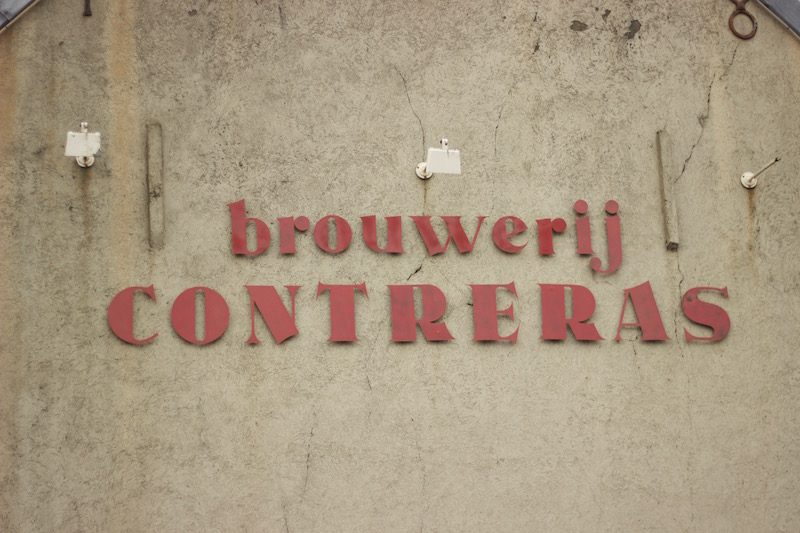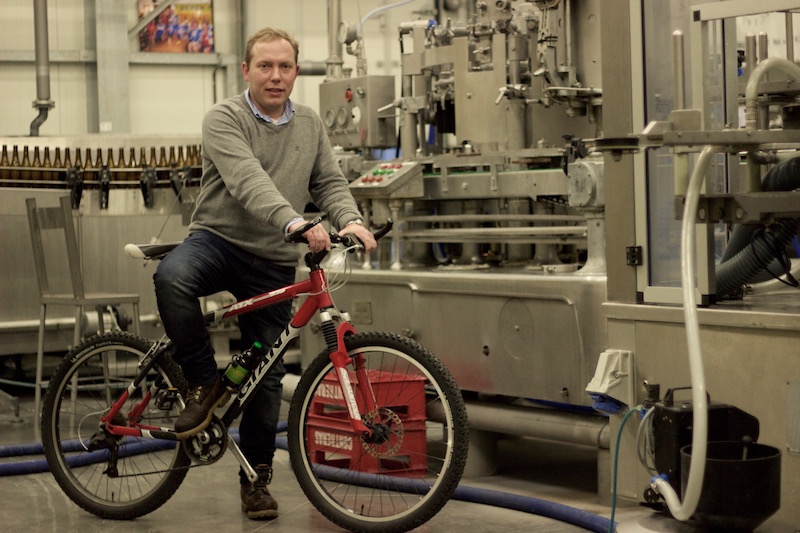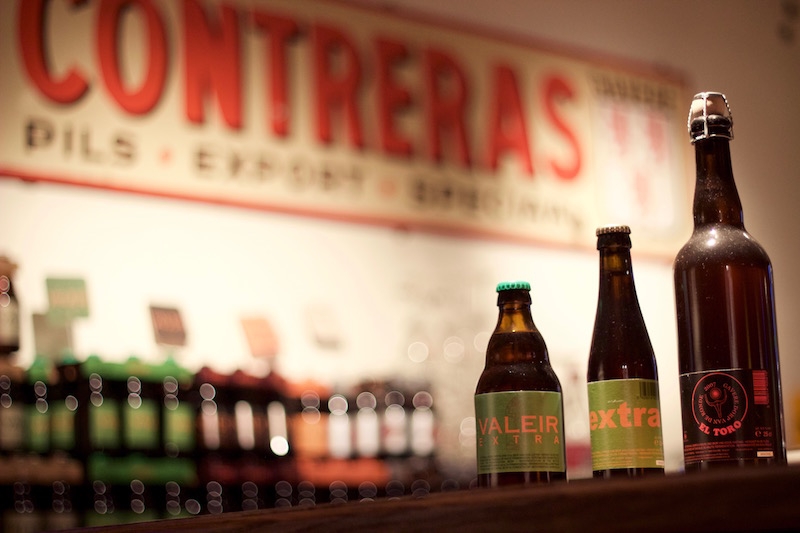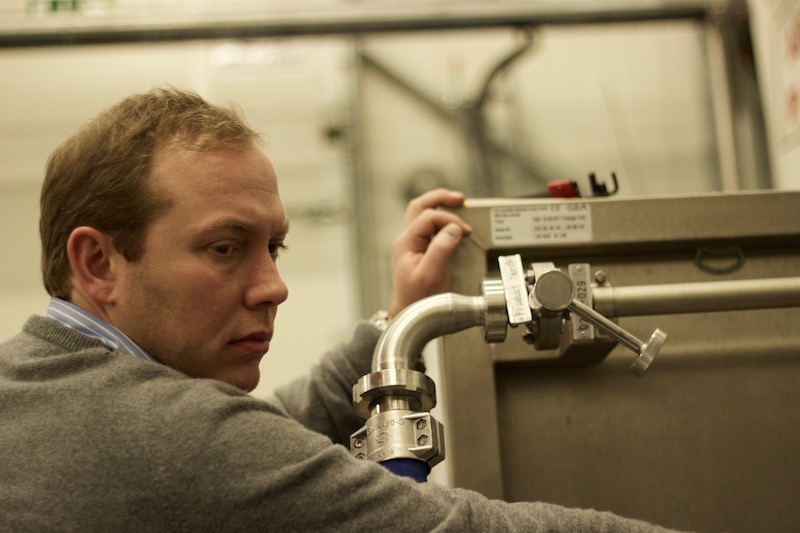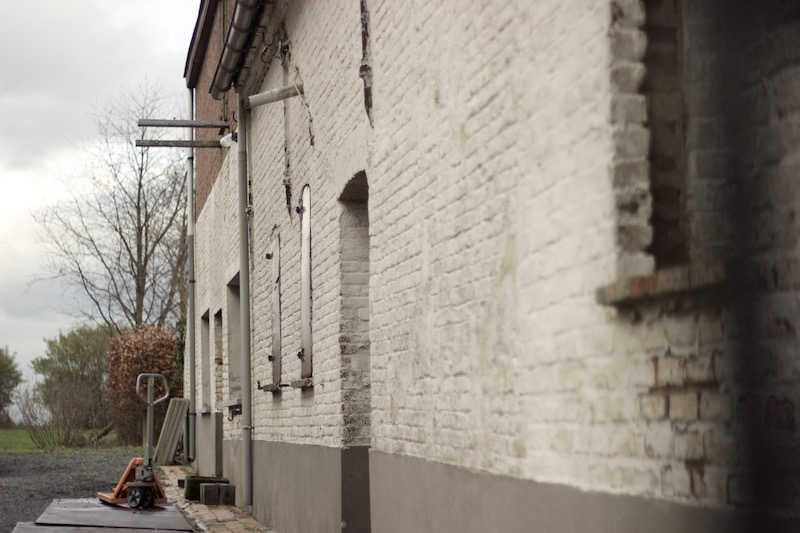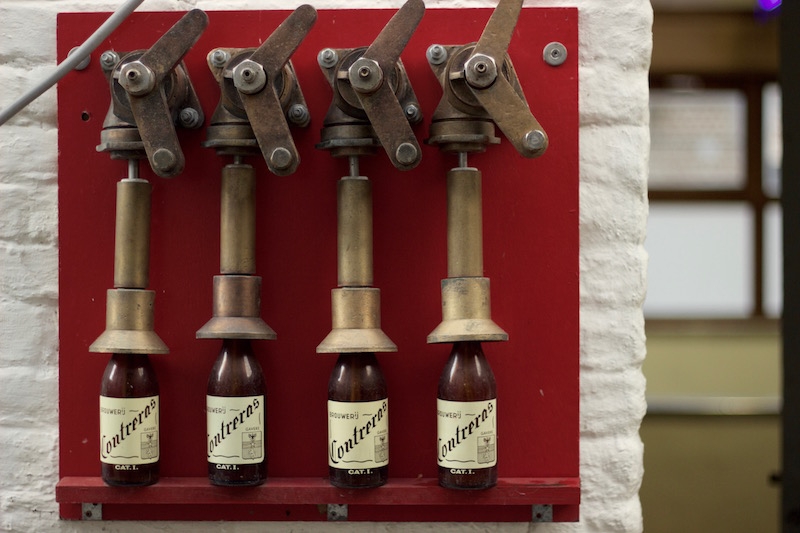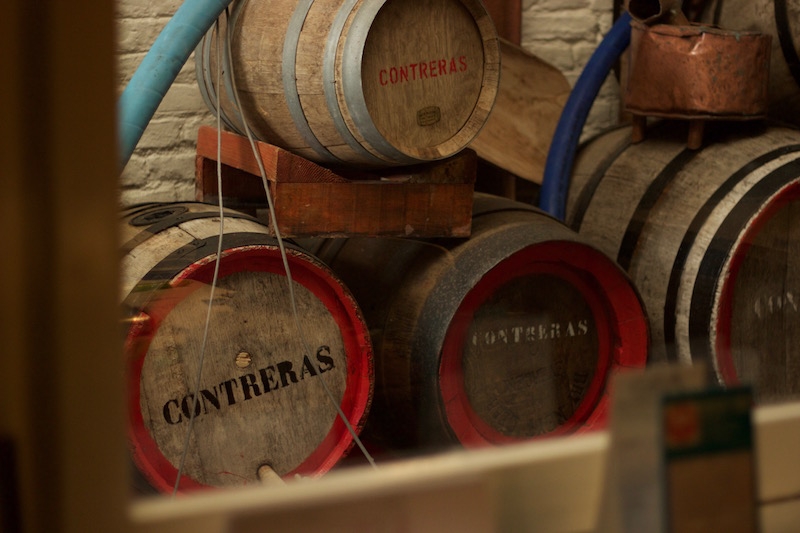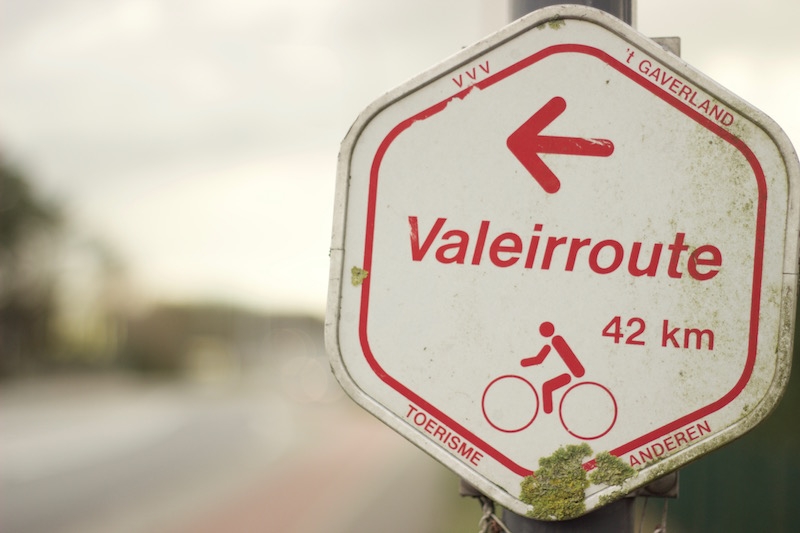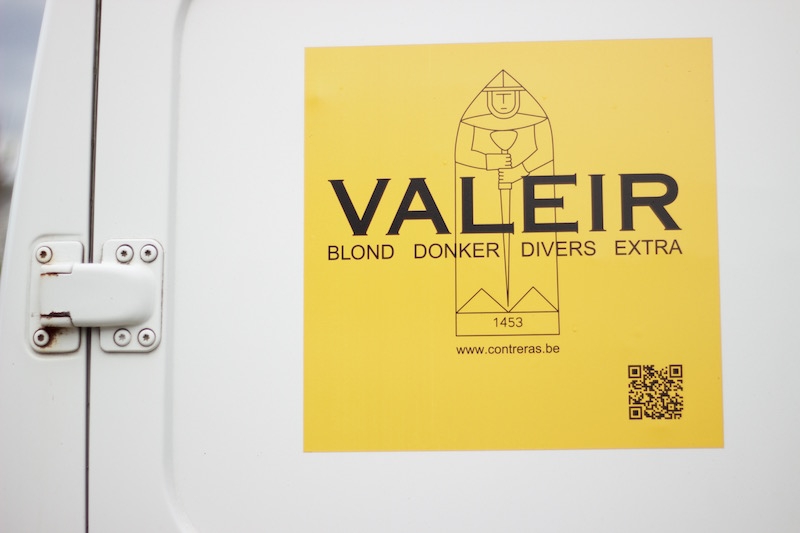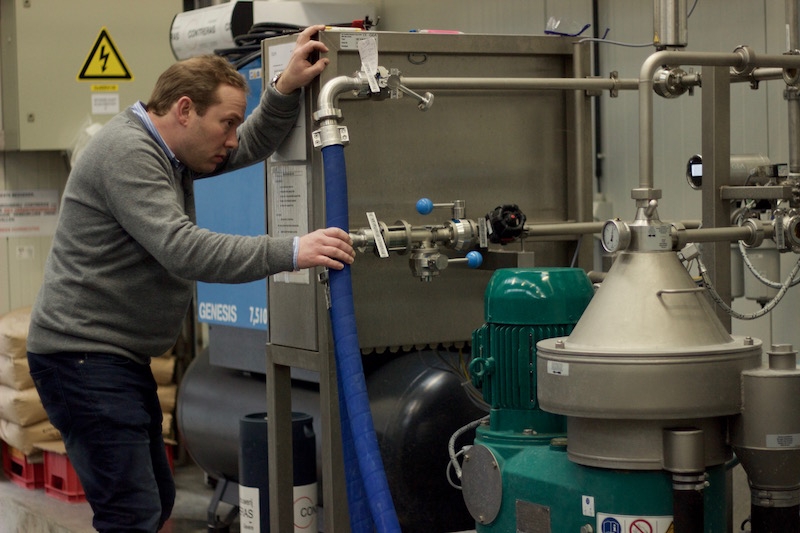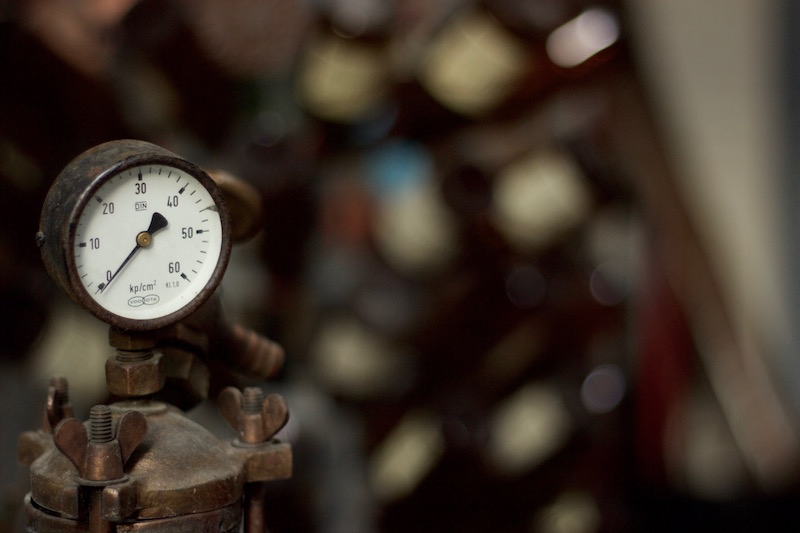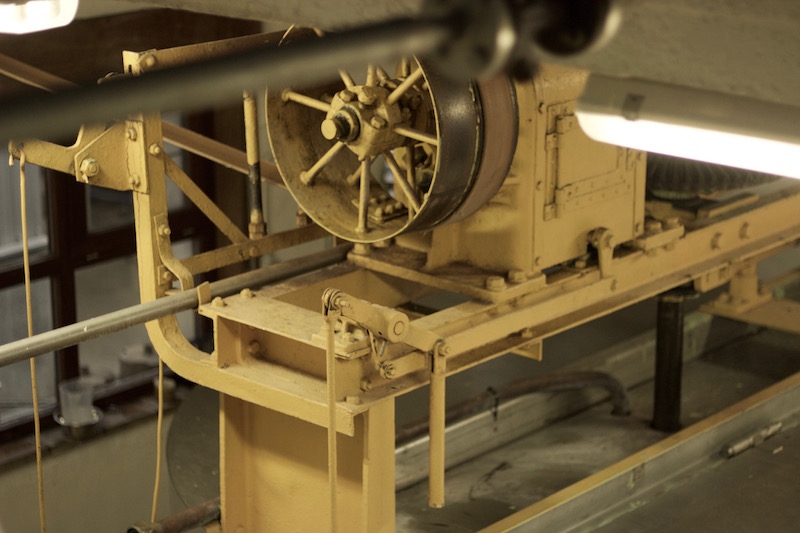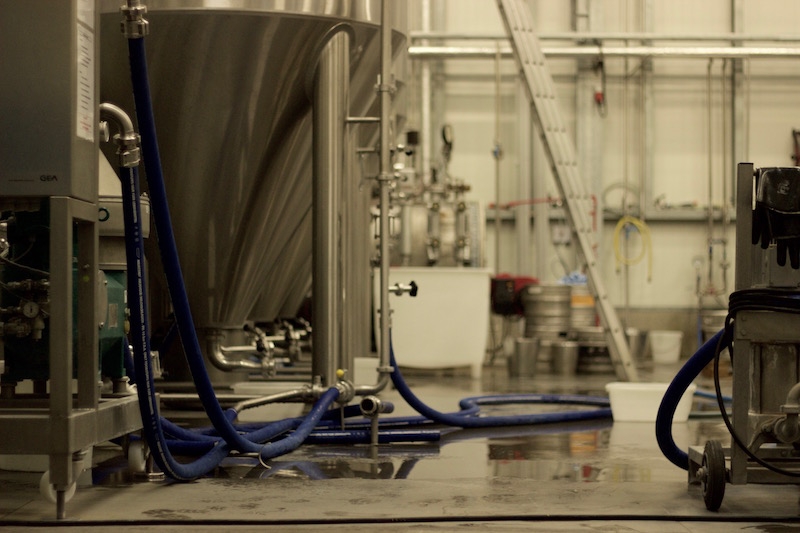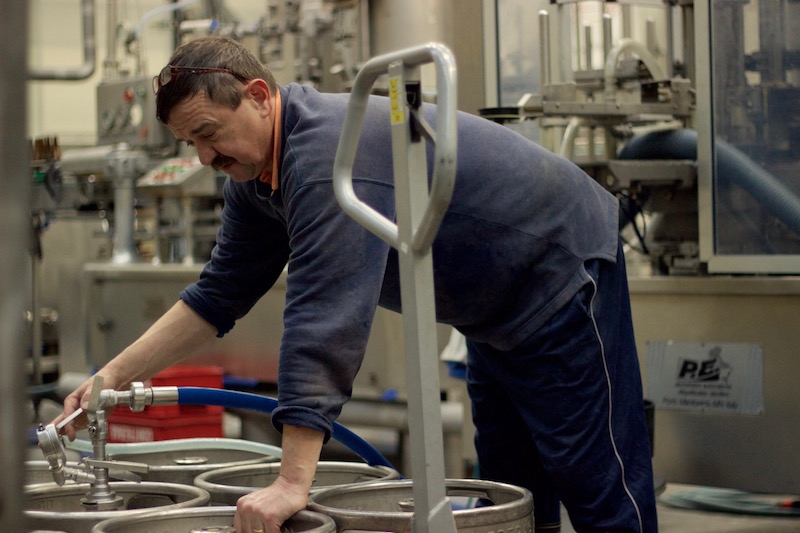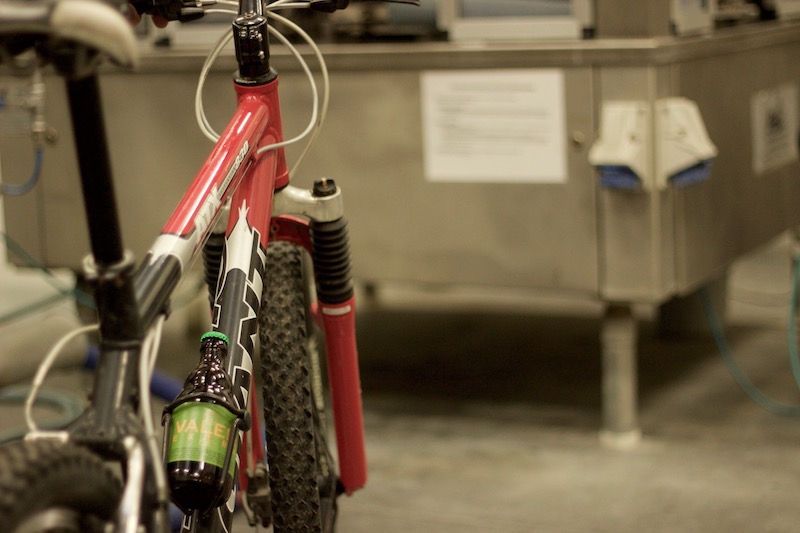Every year in the northwest part of Belgium a world-class field of cyclists endure a gruelling 265 km race across narrow cobblestoned hills whose most dramatic events unfold in the Flemish Ardennes. According to American cyclist George Hincapie, “it’s without question the hardest one-day bike race ever created.” He poetically summarised it as “war on a bike.”
That race is the Tour of Flanders or the ‘Ronde Van Vlaanderen’, a cultural phenomenon which has not only inspired great feats of human endurance in its 100 year history, but which has spawned one of the first commercially available beers using American hops in Belgium: the Valeir Extra, an India Pale Ale of 6.5% ABV which is dry-hopped with large quantities of the dual purpose Amarillo variety.
“The beer for the 2007 Ronde was a cooperation between the community of Gavere and our brewery,” says Frederik De Vrieze of Brouwerij Contreras. “They wanted to name it ‘El Toro’ because that was the nickname of the 1960 Ronde winner and Gavere resident, Arthur Decabooter.”
It wasn’t until after the race that Frederik realised how popular the beer had been both locally and with distributors. He also discovered that it would have to be renamed. “The name El Toro is owned by a big warehouse company in the Netherlands,” says Frederik. “We changed the name to Valeir Extra.”
BROUWERIJ CONTRERAS
Frederik isn’t from Gavere. He’s from Oudenaarde, 12 kms from the village in which the brewery is located. “I’m not a Contreras,” he says. “My wife is the Contreras. My father in law had only one daughter and was not motivated in investing in the brewery. He just did what his father had done and Brouwerij Contreras began to decline. He had too many people working here. The machinery was old. He used open fermentation tanks. He didn’t want anyone to continue. He wanted the last person to turn the lights out.”
Frederik wasn’t working in the beer industry when he met his wife, Ann Contreras, but he had more than a passing interest in beer. “I started taking lessons in Ghent for brewing,” he says. “I didn’t say anything to my father in law. And then, 11 years ago when he was 71 years old he asked me to take over the brewery.”
Frederik was taking on somewhat of a dynasty. Brouwerij Contreras was established almost 200 years ago in 1818 when it was both a brewery and a farmhouse. “During summer they farmed and during winter they brewed beer,” he says. “It was quite a common combination in Flanders. They cultivated their own barley grains and they also had their own maltings.”
The Especial Mars, a Belgian ale of 6.5% ABV – still brewed by Brouwerij Contreras today – was born from these beginnings. “The brewing season began in October and they made a special beer to mark the end of the brewing season in March,” says Frederik. “Mars means March. In fact, it’s a stronger version of our Speciale Belge, the Tonneke.”
In 1920 Marcel Contreras bought the brewery and introduced cooling equipment which facilitated the production of bottom fermented beers. After graduating from brewery school in 1957, Marcel’s son Willy – Frederik’s father-in-law – started working in the brewery. When Marcel died in 1982, Willy took it over and continued brewing the Mars, Tonneke and their lager, Contra Pils.
FREDERIK’S NEW RANGE
Frederik introduced the newer range of beers in 2004: Valeir Blond; Valeir Donker; and Valeir Divers. The name of the range has its roots in several local stories. The first relates to the person who started it all. “The first brewer here was called Valère Latte,” says Frederik. “In 1898 he sold the brewery to René Contreras who was from Spanish origin and who also possessed a brewery in Evergem.”
Another story centres on a warrior called Valère who fought in the battle of Gavere in 1453. “In 1953 they had a 500 year remembrance of that battle and made a statue of the warrior Valère on the marketplace,” says Frederik. “A lot of young people came to the statue to meet or hang out. It so happened that there was a tailor on the marketplace in Gavere in the 1950s who had the same face as the statue. His name was Valeir. Because he was a look-a-like of the statue, all the young people renamed the statue with that different spelling, Valeir.”
THE VALEIR EXTRA
The Valeir Extra appeared at the 2007 Tour of Flanders and was based on the Valeir Blond, a beer which the famous beer writer Michael Jackson described as “one of Belgium’s best kept secrets.” Both beers are bittered with Sterling and share similar malt and yeast profiles. The difference comes in the dry-hopping. The Valeir Extra gets a generous blast of Amarillo. “In the beginning I started dry-hopping with 10kg of Amarillo for 50 hectolitres,” says Frederik. “Now we are on 20kg for 70 hectolitres.”
Bone dry beers boasting liberal dry-hopping with aromatic hop varieties from Yakima Valley may be two a penny in the States or the UK, but in Belgium, there’s a national restraint in letting one ingredient dominate for fear of imbalance. “We were one of the first Belgian breweries starting with that kind of beer,” says Frederik. “It’s really drinkable. You order a second one when you’re finished. In the United States they have a lot of IPAs but the bitterness is too much to drink a lot of them. We always have to look between taste and drinkability.”
STARTING FROM SCRATCH
While Frederik may be open to influence from foreign beer culture, both his brewing philosophy and his brewing system remain relatively traditional. The legacy he has inherited from a nearly 200-year-old family brewery requires respectful treatment and has presented Frederik with a set of significant challenges. “In 2009 we had serious problems with the Federal Food Agency here in Belgium,” says Frederik. “The roof of the old bottling building was made of wood. I tried to explain to them that everything in the system was closed and that the beer goes in through a pipe and comes out in the bottle. They even complained that there was wood in our bar, which isn’t even a production area.”
Frederik took the decision to close Brouwerij Contreras and to start from scratch, arranging production to be carried out instead at a contract facility in the meantime. “I broke everything down and started renewing bit by bit,” he says. “We had to start from zero. In 2010 we didn’t brew at all here for one whole year.”
Within that year, the specifications for the brewery were completely upscaled. Frederik maintained the old 70 hectolitre tiled mash tun and boiling kettle while shipping in high standard stainless steel tanks, all temperature controlled, a large centrifuge for clarifying the beer as well as a plate filter for the pils beer.
“In the last year our production has increased 50%,” he says. “We’ve ordered new tanks which arrive next month, together with a new malt mill-installation. At the minute it takes two people as much as two and a half hours just to mill the grain for one batch. We work with bags of malt of 50 kgs and we have to carry them up the stairs. It’s important for us to work easier.”
They’ve also ordered new tanks which are arriving in April which will make it easier to more efficiently dry-hop the beers, specifically the Valeir Extra. “I need a system to circulate the hops,” he says. “In a normal tank, the hops fall down and you can’t connect the pump because it’s blocked. The new tanks have a third tap 10% higher up so I can take beer out from there and inject it down to circulate the beer. It’s also better for the taste.”
The new tanks are important to help meet demand for Brouwerij Contreras. “You can have a small period where you can’t follow, but people have got so much choice that if you don’t get your beer out there, they will buy another beer and forget about you. The choice is incredible right now.”
While a huge endeavour, the rebuilding and renovation wasn’t outside Frederik’s skill set. Before he created the Valeir Extra, before he was a professional brewer, before he met his wife, he was a practising architect. For Frederik such a project was as easy as riding a bike.


